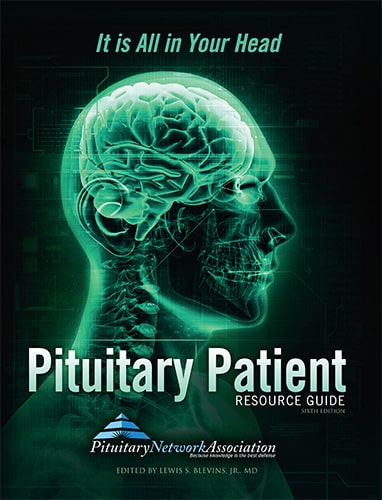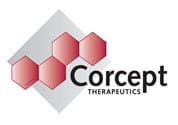News Articles February 2022
Written on 04 February 2022.
March 2023 Research Articles
Pituitary Tumors
CircOMA1 modulates cabergoline resistance by downregulating ferroptosis in prolactinoma.
The clinical characteristics and gene mutations associated with thyroid hormone resistance syndrome coexisting with pituitary tumors.
AIP gene germline variants in adult Polish patients with apparently sporadic pituitary macroadenomas.
Expression and Clinical Significance of MDM2 in Non-Functioning PitNETs.
Pituitary Surgery
Prospective evaluation of multidimensional health-related quality of life after endoscopic endonasal surgery for pituitary adenomas using the endoscopic endonasal sinus and skull base surgery questionnaire
Bilateral Superficial Trigeminal Nerve Blocks are not more Effective than a Placebo in Abolishing Post-operative Headache in Pituitary Transsphenoidal Neurosurgery: A Prospective, Randomized, Double-blinded Clinical Trial.
Cortisol and ACTH Measurements at Extubation From Pituitary Surgery Predicts Hypothalamic-Pituitary-Adrenal Axis Function.
OptImal Gamma kNife lIghTnIng sOlutioN (IGNITION) score to characterize the solution space of the Gamma Knife FIP optimizer for stereotactic radiosurgery.
Effects of Craniotomy and Endoscopic Endonasal Transsphenoidal Surgery on Bodyweight in Adult-Onset Craniopharyngioma: A Single-Center Retrospective Study.
Pituitary Cancer
Outcome and prognostic factors for pituitary carcinomas: lessons from a systematic review.
Imaging
Multiple Brain Tumor Classification with Dense CNN Architecture Using Brain MRI Images.
Evaluation of preoperative visual pathway impairment in patients with non-functioning pituitary adenoma using diffusion tensor imaging coupled with optical coherence tomography.
PNA Medical Corner: Size of Pituitary Microadenomas
This month the PNA Medical Corner showcases a study co-authored by Drs. Edward Laws and Ursula Kaiser, both longtime members of the PNA. The study looks at the size of microadenomas over time. It concludes that two-thirds of microadenomas studied either stayed the same or shrank over time, and therefore that “less frequent pituitary MRI surveillance for patients with incidental pituitary microadenomas may be safe.
Link:
https://www.acpjournals.org/doi/10.7326/M22-1728
Long-Term Changes in the Size of Pituitary Microadenomas
-
Dawid Hordejuk, BA; Yee-Ming M. Cheung, MD; Wei Wang, PhD; Timothy Smith, MD;
Abstract
Background: The estimated prevalence of pituitary lesions is 10% to 38.5% in radiologic studies. However, how frequently these incidental lesions should be monitored by serial pituitary magnetic resonance imaging (MRI) remains unclear.
Objective: To evaluate changes in pituitary microadenomas over time
Design: Retrospective, longitudinal cohort study.
Setting: Mass General Brigham, Boston, Massachusetts.
Patients: Evidence of pituitary microadenoma from MRI.
Measurements: Dimensions of pituitary microadenomas.
Results: During the study period (from 2003 to 2021), 414 patients with pituitary microadenomas were identified. Of the 177 patients who had more than 1 MRI, 78 had no change in the size of the microadenoma over time, 49 had an increase in size, 34 had a decrease in size, and 16 had both an increase and decrease in size. By linear mixed model analysis, the estimated slope was 0.016 mm/y (95% CI, −0.037 to 0.069). In the subgroup analysis, pituitary adenomas with a baseline size of 4 mm or less tended to increase in size. The estimated slope was 0.09 mm/y (CI, 0.020 to 0.161). In contrast, in the subgroup with baseline tumor size greater than 4 mm, the size tended to decrease. The estimated slope was −0.063 mm/y (CI, −0.141 to 0.015).
Limitation: Retrospective cohort, some patients were lost to follow-up for unknown reasons, and data were limited to local large institutions.
Conclusion: During the study period, approximately two thirds of the microadenomas remained unchanged or decreased in size. The growth, if any, was slow. These findings suggest that less frequent pituitary MRI surveillance for patients with incidental pituitary microadenomas may be safe.
Primary Funding Source: None.

Dr. Edward Laws

Dr. Ursula Kaiser
Xeris Biopharma Announces FDA Grants Orphan-drug Exclusivity for Recorlev®
PNA Highlights February 2023

Give a man health and a course to steer, and he’ll never stop to trouble about whether he’s happy or not.
-George Bernard Shaw
In Memorium:
Justin Schultz Cetas, MD, PhD
Oct. 3, 1970 – July 13, 2022
PNA Spotlight: Tyler J. Kenning
This month the PNA Spotlight focuses on Tyler J. Kenning, MD, FAANS, who serves as director of pituitary and cranial base surgery at Piedmont Brain Tumor Center, part of Piedmont Atlanta Hospital. Dr. Kenning attended medical school at Thomas Jefferson University, graduating in 2005. He did his residency at Albany Medical Center in neurological surgery and completed a fellowship in neurosurgical oncology at Thomas Jefferson University Hospital. Here are Dr. Kenning’s answers to a series of questions posed by the PNA.

PNA Medical Corner: When Pituitary Carcinoma Spreads to the Cervical Spine
This month the PNA Medical Corner focuses on a study co-authored by longtime PNA member Dr. William Couldwell. It presents a case study of a woman whose prior pituitary carcinoma spread to the cervical spine. They conclude that long term monitoring of hormones after pituitary surgery is crucial.

Copyright © 2024 Pituitary Network Association All rights reserved.
Disclaimer: PNA does not engage in the practice of medicine. It is not a medical authority, nor does it claim to have medical expertise. In all cases, PNA recommends that you consult your own physician regarding any course of treatment or medication.
Our mailing address is:
Pituitary Network Association
P.O. Box 1958
Thousand Oaks, CA 91358
(805) 499-9973 Phone - (805) 480-0633 Fax
Email info@pituitary.org
You are receiving this Newsletter because you have shown interest in receiving information about our activities.
If you do not want to receive any more emails from PNA, Unsubscribe.
February 2023 Research Articles
Pituitary Tumors
MRI-based brain tumor detection using convolutional deep learning methods and chosen machine learning techniques.
Cathepsin D Inhibits Angiogenesis in Pituitary Neuroendocrine Tumors.
Pituitary adenoma “pneumo-apoplexy”.
Improved Detection of Cavernous Sinus Invasion of Pituitary Macroadenomas with Ultra-High-Field 7 T MRI.
Risk Factor and Replacement Therapy Analysis of Pre- and Postoperative Endocrine Deficiencies for Craniopharyngioma.
The Morphology of the Pituitary Gland: A Meta-Analysis with Implications for Diagnostic Imaging.
Pituitary Surgery
Preoperative frailty status measured by Clinical Risk Analysis Index and adverse events after endoscopic endonasal transsphenoidal resection of pituitary adenoma: results of a single center prospective case series.
Closure strategy for endoscopic pituitary surgery: Experience from 3015 patients.
Pre-Surgery Patient Health Contributes to Aggravated Sino-Nasal Outcome and Quality of Life after Pituitary Adenomectomy.
Clinical Applicability of the Sellar Barrier Concept in Patients with Pituitary Apoplexy: Is It Possible?
Pituitary Cancer
Case Report: Pituitary metastasis as a presenting manifestation of silent gastric cardia adenocarcinoma.
COVID and the Pituitary
The pituitary gland in SARS-CoV-2 infections, vaccinations, and post-COVID syndrome.
Cushing’s
Advances in Molecular Pathophysiology and Targeted Therapy for Cushing’s Disease.
News Articles February 2023
Bones of 18th Century Acromegalic Taken Off Museum Display

Photo courtesy of the Queen Mary University of London.
The bones of an 18th century acromegalic Irish man named Charles Byrne were on display as a medical curiosity for 140 years before being taken off display, in accordance with his last wishes. Byrne was almost 8 feet tall when he died in 1783 and had requested a burial at sea, however a friend sold his body to a surgeon named John Hunter. It eventually ended up on display at the Hunterian Museum, which is affiliated with the Royal College of Surgeons of England. Read more:
Transsphenoidal Pituitary Neurosurgery: A Moment by Moment Account
Dr. Mazda Turel, a neurosurgeon in Mumbai, India, tells the story of a transsphenoidal surgery he performed. He explains each step in a drama with perilous twists and turns. Read more:
Cushing’s Case Report: Severe Infection and Electrolyte Imbalance
An article in Cushing’s Disease News looks at the case of an 82-year-old woman who presented with a severe muscle infection and an imbalance of electrolytes. She was diagnosed with Cushing’s but passed away from infectious complications from a surgery before she could be treated for Cushing’s. Read more:
11-year-old Patient Battles Tumor Pressing on Pituitary
An article in Spring Advertiser.co tells the story of an 11-year-old girl who is battling optic nerve hypoplasia – and has a schwannoma pressing on her pituitary. Read more:
PNA Medical Corner: When Pituitary Carcinoma Spreads to the Cervical Spine
This month the PNA Medical Corner focuses on a study co-authored by longtime PNA member Dr. William Couldwell. It presents a case study of a woman whose prior pituitary carcinoma spread to the cervical spine. They conclude that long term monitoring of hormones after pituitary surgery is crucial.
Link:
Natural history of pituitary carcinoma with metastasis to the cervical spine: illustrative case
Nicholas T Gamboa, Christopher Wilkerson, Bornali Kundu, Brandon A Sherrod, Andrew T Dailey, William T Couldwell
- PMID: 36647250 PMCID: PMC9844525 DOI: 3171/CASE22363
Free PMC article
Abstract
Background: Pituitary carcinoma is a rare tumor of the adenohypophysis with noncontiguous craniospinal dissemination and/or systemic metastases. Given the rarity of this malignancy, there is limited knowledge and consensus regarding its natural history, prognosis, and optimal treatment.
Observations: The authors present the case of a 46-year-old woman initially treated with invasive prolactin-secreting pituitary macroadenoma who developed metastatic disease of the cervical spine 6 years later. The patient presented with acutely worsening compressive cervical myelopathy and required posterior cervical decompression, tumor resection, and instrumented arthrodesis for posterolateral fusion.
Lessons: This case underscores the importance of long-term monitoring of hormone levels and having a high clinical suspicion for metastatic disease to the spine in patients presenting with acute myelopathy or radiculopathy in the setting of previously treated invasive secreting pituitary adenoma.
Keywords: cervical myelopathy; intradural extramedullary mass; pituitary carcinoma; prolactinoma; spinal metastases; spine tumor.

Dr. William Couldwell
PNA Spotlight: Dr. Tyler J. Kenning
 This month the PNA Spotlight focuses on Tyler J. Kenning, MD, FAANS, who serves as director of pituitary and cranial base surgery at Piedmont Brain Tumor Center, part of Piedmont Atlanta Hospital. Dr. Kenning attended medical school at Thomas Jefferson University, graduating in 2005. He did his residency at Albany Medical Center in neurological surgery and completed a fellowship in neurosurgical oncology at Thomas Jefferson University Hospital. Here are Dr. Kenning’s answers to a series of questions posed by the PNA.
This month the PNA Spotlight focuses on Tyler J. Kenning, MD, FAANS, who serves as director of pituitary and cranial base surgery at Piedmont Brain Tumor Center, part of Piedmont Atlanta Hospital. Dr. Kenning attended medical school at Thomas Jefferson University, graduating in 2005. He did his residency at Albany Medical Center in neurological surgery and completed a fellowship in neurosurgical oncology at Thomas Jefferson University Hospital. Here are Dr. Kenning’s answers to a series of questions posed by the PNA.
What inspired you to choose your career path?
My father was a neurosurgeon. Growing up, I watched him work tirelessly, and I quickly realized that his efforts truly embodied the virtues of Theodore Roosevelt’s sentiment that “…the best prize that life has to offer is the chance to work hard at work worth doing.” The potential ability to make a meaningful difference in patients’ lives led me to similarly pursue a career in medicine and then neurosurgery. During my training, I became greatly interested in the physiology of the pituitary gland and the endocrine system as well as endoscopic ‘minimally invasive’ neurosurgery. The prospect of having a brain tumor and then undergoing a neurosurgical procedure is a very daunting and scary one for patients, and the ability to offer ‘minimally invasive’ but ‘maximally effective’ surgery to treat these problems is important.
What is the primary focus of your work/research?
I’m very interested in cranial base surgery and neurosurgical oncology. Both of these are rapidly evolving fields where new technologies are constantly being applied to make treatment more effective, safer, and less destructive to normal structures. My work and research focuses on ways to do that, including minimally invasive surgical approaches and reconstruction of the cranial base. Endoscopic endonasal surgery may be one of the most important recent advances to these fields, allowing safe access to areas of the cranial base and brain that were not previously achievable. In doing so, knowledge of the relevant anatomy, surgical technique and sufficient reconstruction is critical. We have worked and published on each of these areas.
What do you consider to be the future of your field?
Although surgical treatment will likely always be an integral part of cranial base disorders, pituitary care and neuro-oncology, its focus continues to drastically change. We’ve developed safer surgical techniques as well as complementary medical and radiotherapy treatments that allow for more effective therapies and better quality of life for patients. This requires continued evolution of our surgical procedures with a focus not only on treating a tumor and its effects, but also on preserving/restoring function and being minimally disruptive to patient’s lives. Our surgical treatments will continue to be more gentle and safe, while our collaboration in physician ‘teams,’ including medicine, surgery and radiation, will be increasingly important. In the future, there will continue to be a shift away from a ‘single doctor approach’ to management of medical issues in favor of Centers of Excellence and multidisciplinary, collaborative teams of physicians.
What should patients know about your field/what deserves more recognition/awareness?
Being diagnosed with a brain tumor and going to see a neurosurgeon can be a frightening experience for patients. Disorders of the pituitary gland, the ‘master gland’ of our hormone system, is very common and occur in up to 20% of the population. One of the main reasons that I enjoy treating patients with pituitary tumors and problems is that I am able to reassure them that these are typically benign ‘non-cancerous’ tumors, and most patients will be relieved to hear that they just need to be observed (and not necessarily treated) by a team of surgeons, endocrinologists and ophthalmologists. For those patients that do require treatments, these are often highly effective, very safe and allow for rapid recovery.
What would you like to convey about yourself to your patients?
My approach, and that of our entire team, to patients is to provide the care that we would want delivered to ourselves and to members of our own families. Although I am often asked what are my favorite surgical procedures to perform, the preferred aspect of our work is the personal interaction with patients, the reassurance that I am able to provide in the outpatient office and hospital or around the time of surgery and recovery. The ability to make a meaningful difference to patients is the best part of doing what we do. The trust that patients place in us to provide their medical care is such a privilege and one that we recognize and take very seriously
Why did you get involved with the PNA; what is the extent of your involvement.
The PNA is a fantastic patient-centric resource for information on disorders of the pituitary gland. As an international non-profit organization, it has served to bring some of the world’s top clinicians and scientists together in a collaborative effort to improve pituitary care and be at the forefront of supporting research and providing education to patients and their families. The PNA truly embraces the multidisciplinary management of the field, and it is my privilege to be involved and contribute to these efforts..
PNA Highlights January 2023

Cheerfulness is the best promoter of health and is as friendly to the mind as to the body
-Joseph Addison
PNA Spotlight: Dr. Brian Williams
This month the PNA Spotlight focuses on Dr. Brian Williams, an Assistant Professor in the Department of Neurosurgery at the University of Louisville, where he leads the Division of Neurosurgical Oncology, Skull Base Surgery and Pituitary Surgery. Dr. Williams earned his medical degree from the Baylor College of Medicine in Houston, Texas. He did a residency in neurological surgery at the University of Virginia in Charlottesville, followed by a fellowship in Neurosurgical Oncology at MD Anderson Hospital in Houston. He also pursued specialty training in cerebrovascular and skull base surgery at the Auckland City Hospital in New Zealand. He was kind enough to answer some questions from the PNA. His answers are below

Dr. Brian Williams
PNA Medical Corner: Otolaryngology Pioneers of Transsphenoidal Surgery
This month the PNA Medical Corner focuses on an article co-authored by Dr. Edward Laws, a longtime member of the PNA. The research looks at the considerable impact two early otolaryngologists, Markus Hajek and Oskar Hirsch, had in developing endonasal transsphenoidal pituitary surgery.

Dr. Edward Laws
Copyright © 2024 Pituitary Network Association All rights reserved.
Disclaimer: PNA does not engage in the practice of medicine. It is not a medical authority, nor does it claim to have medical expertise. In all cases, PNA recommends that you consult your own physician regarding any course of treatment or medication.
Our mailing address is:
Pituitary Network Association
P.O. Box 1958
Thousand Oaks, CA 91358
(805) 499-9973 Phone - (805) 480-0633 Fax
Email info@pituitary.org
You are receiving this Newsletter because you have shown interest in receiving information about our activities.
If you do not want to receive any more emails from PNA, Unsubscribe.
January 2023 Research Articles
Pituitary Tumors
Attention and working memory in patients with prolactinomas: a case-control study.
Collision of Two Tumors: A Case Report of a Lung Adenocarcinoma With Metastasis to a Pituitary Adenoma.
The Effect of Prolactinoma on Tear Film Function.
Contemporary Biological Insights and Clinical Management of Craniopharyngioma.
Radiation therapy outcomes of patients with pituitary macroadenoma.
The need to shed light on potential insidious SARS-CoV-2 post-vaccination pituitary lesions.
Pituitary Surgery
Disparities in Postoperative Endocrine Outcomes After Endoscopic-Assisted Transsphenoidal Pituitary Adenoma Resection.
Multi-layer reconstruction of skull base after endoscopic transnasal surgery for invasive pituitary adenomas.
Clinical outcomes of benign brain tumors treated with single fraction LINAC-based stereotactic radiosurgery: Experience of a single institute.
Acromegaly
Associations between paraclinical parameters, symptoms and quality of life in patients with acromegaly: a cross sectional study.
Case report: Clinical and single-cell transcriptome sequencing analysis of a mixed gangliocytoma-adenoma presenting as acromegaly.
Hormonal Health
Isolated growth hormone deficiency and amenorrhea – Case report
Approach to a case with an unusual cause of hypopituitarism.
Available Now!

The Pituitary Patient Resource Guide Sixth Edition is now available! Be one of the first to have the most up-to-date information. The Pituitary Patient Resource Guide a one of a kind publication intended as an invaluable source of information not only for patients but also their families, physicians, and all health care providers. It contains information on symptoms, proper testing, how to get a diagnosis, and the treatment options that are available. It also includes Pituitary Network Association's patient resource listings for expert medical care.









